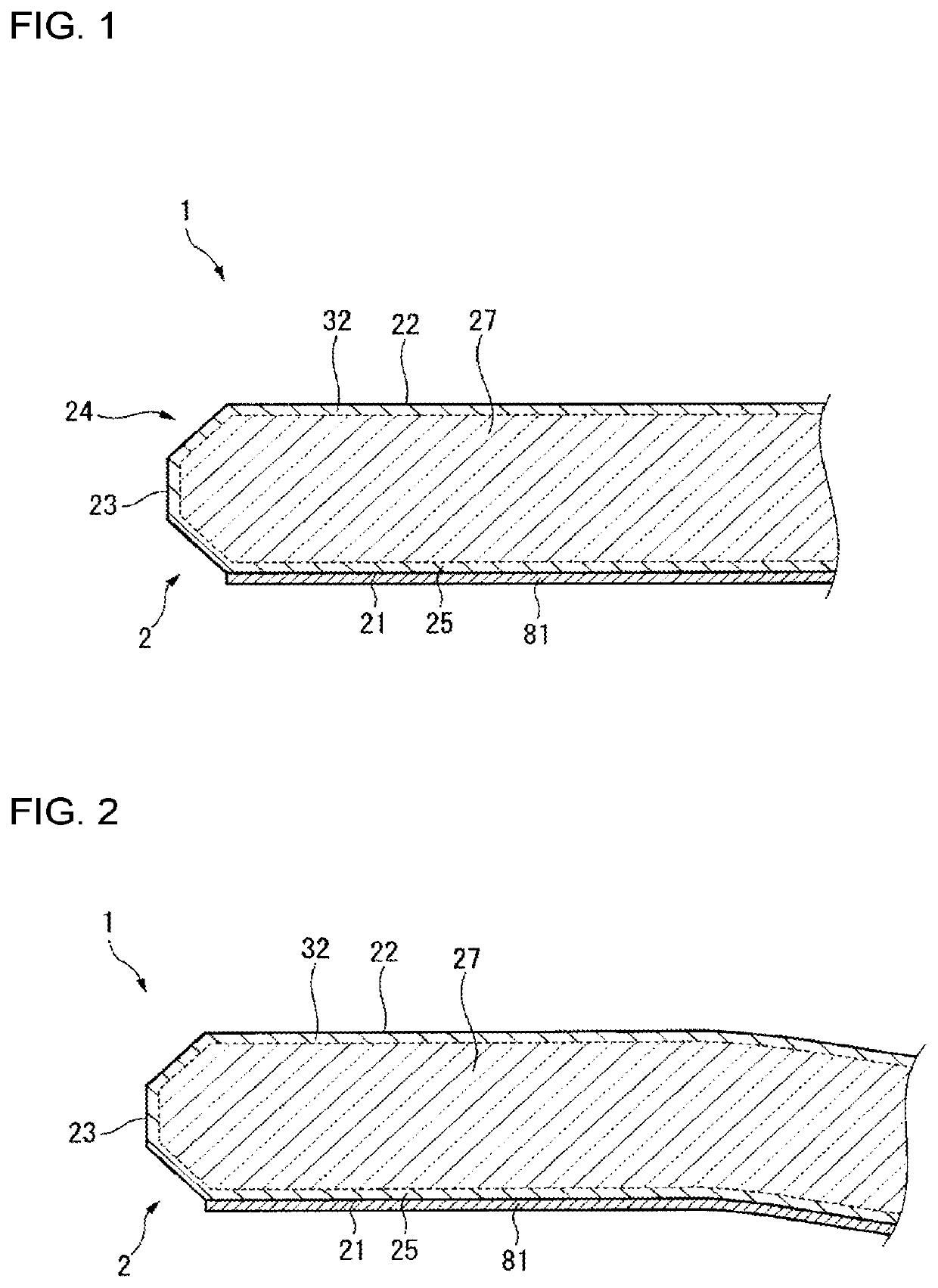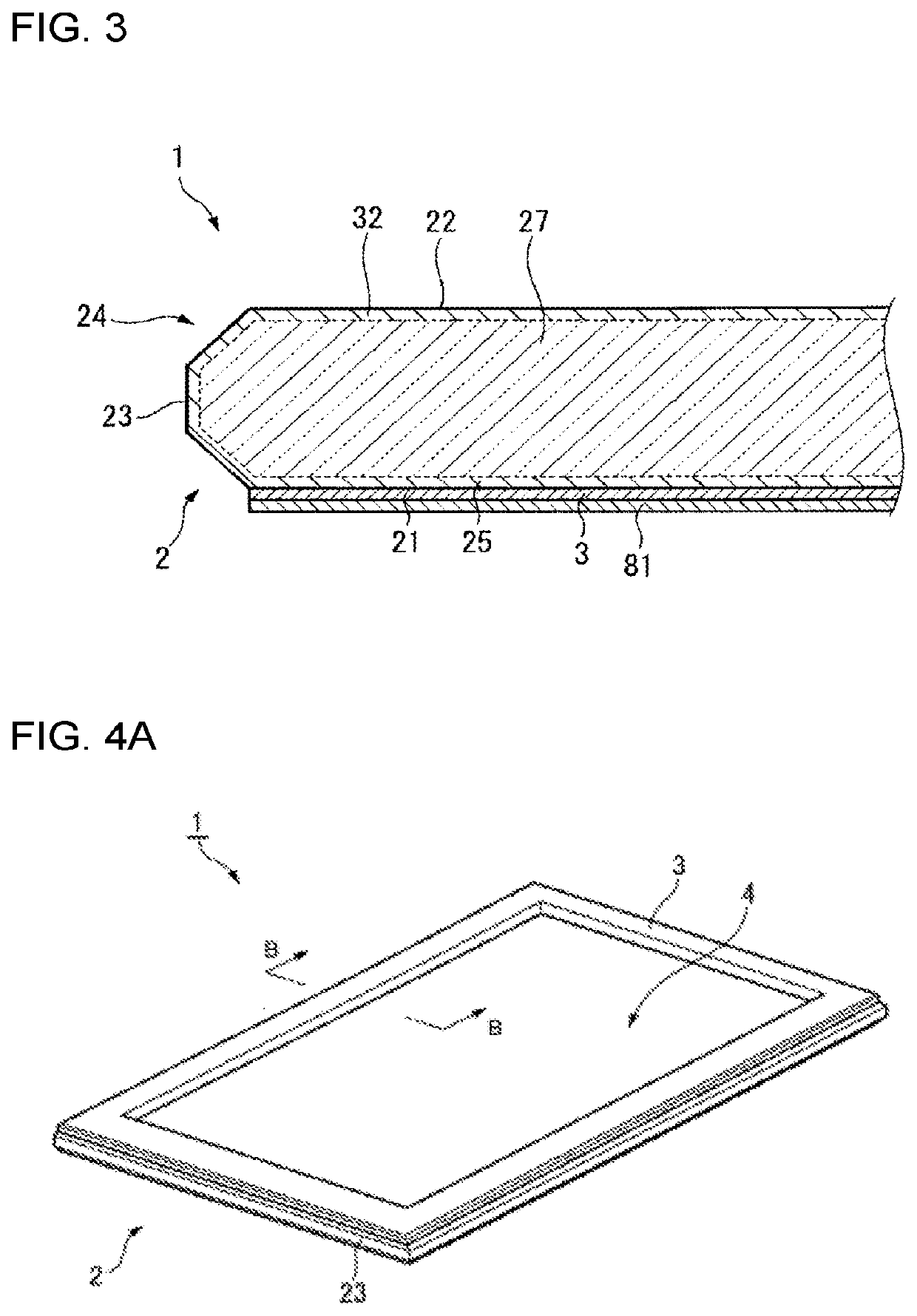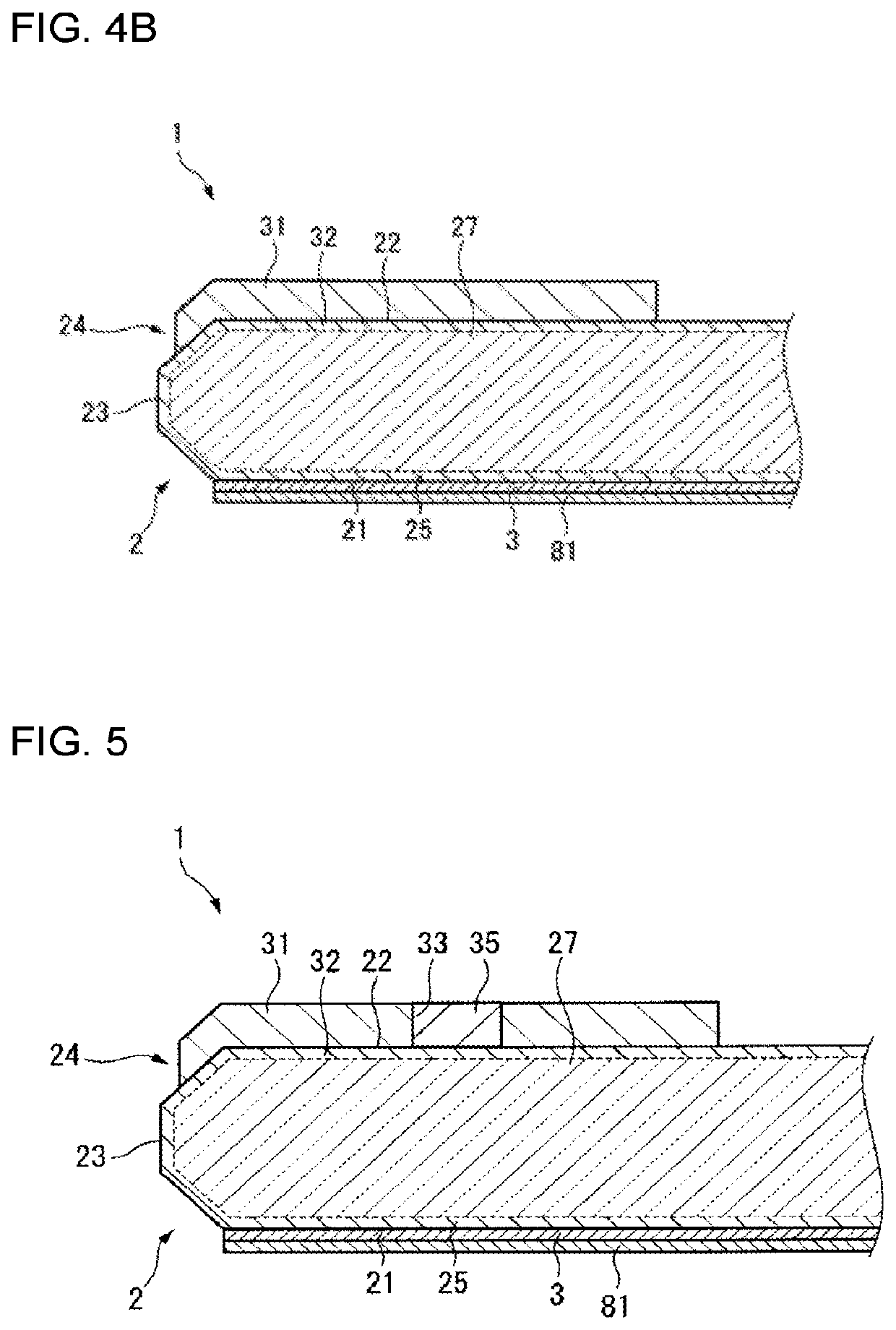Cover glass and in-cell liquid-crystal display device
a liquid crystal display device and cover glass technology, applied in non-linear optics, instruments, coatings, etc., can solve the problems of liquid crystal display screen opacification when touched with a finger, in-cell liquid crystal display devices, and increased thickness and weight of types, so as to prevent opacification, prevent opacification, and high mobility
- Summary
- Abstract
- Description
- Claims
- Application Information
AI Technical Summary
Benefits of technology
Problems solved by technology
Method used
Image
Examples
modification examples
[0170]The present invention is not limited to the embodiments only, and various improvements, design changes, and the like are possible within the gist of the invention. The specific procedures, structures, etc. for carrying out the present invention may be other structures, etc. so long as the object of the present invention can be achieved.
[0171]The shape of the chemically strengthened glass 2 is not limited to a sheet having flat surfaces only, and may be a sheet at least partly having a cured surface or a sheet having a recess. For example, the chemically strengthened glass 2 may be a bent glass such as that shown in FIG. 2. In the case where a bent glass is used, attachment of the cover glass 1 to a mating member does not result in a decrease in attachment accuracy even when the mating member has a bent shape.
[0172]The thickness of the chemically strengthened glass 2 is preferably 0.5 mm or larger. Use of the glass having a thickness of 0.5 mm or larger has an advantage in that...
example 1
[0223]First, a glass having the composition shown as Example 1 in Table 1 was produced by the float process to obtain a 0.7-mm glass sheet as a glass to be chemically strengthened. The glass obtained was cut into a size with a width of 100 mm and a length of 120 mm (area of the first main surface, 12,000 mm2), a size with a width of 100 mm and a length of 180 mm (area of the first main surface 21, 18,000 mm2), and a size with a width of 100 mm and a length of 260 mm (area of the first main surface 21, 26,000 mm2).
[0224]Next, these glasses were chemically strengthened. The chemical strengthening was conducted under the conditions of 8-hour immersion in 100 wt % molten potassium nitrate salt having a temperature of 420° C.
[0225]The strengthened glasses were cleaned. Thereafter, a liquid obtained by diluting A fluid S-550, manufactured by AGC Inc., with fluorochemical solvent ASAHIKLIN AC-6000, manufactured by AGC Inc., to 0.1 mass % was applied to one surface of each glass by spray co...
example 2
[0242]Raw materials were mixed so as to result in a glass having the composition shown as Example 2 in Table 1. The raw-material mixture was melted, poured so as to give a block about 300 mm square, and then gradually cooled to obtain a glass object as a glass to be chemically strengthened. Thereafter, the glass object was cut and machined to obtain plate-shaped glasses respectively having: a width of 100 mm, a length of 120 mm, and a thickness of 0.7 mm; a width of 100 mm, a length of 180 mm, and a thickness of 0.7 mm; and a width of 100 mm, a length of 260 mm, and a thickness of 0.7 mm.
[0243]Next, these glasses were chemically strengthened. The chemical strengthening was conducted under such conditions that the glasses were immersed for 3 hours in 100 wt % molten sodium nitrate salt having a temperature of 450° C. and then immersed for 3 hours in 100 wt % molten potassium nitrate salt having a temperature of 450° C.
[0244]Thereafter, the glasses were treated under the same conditio...
PUM
| Property | Measurement | Unit |
|---|---|---|
| area | aaaaa | aaaaa |
| area | aaaaa | aaaaa |
| area | aaaaa | aaaaa |
Abstract
Description
Claims
Application Information
 Login to View More
Login to View More - R&D
- Intellectual Property
- Life Sciences
- Materials
- Tech Scout
- Unparalleled Data Quality
- Higher Quality Content
- 60% Fewer Hallucinations
Browse by: Latest US Patents, China's latest patents, Technical Efficacy Thesaurus, Application Domain, Technology Topic, Popular Technical Reports.
© 2025 PatSnap. All rights reserved.Legal|Privacy policy|Modern Slavery Act Transparency Statement|Sitemap|About US| Contact US: help@patsnap.com



